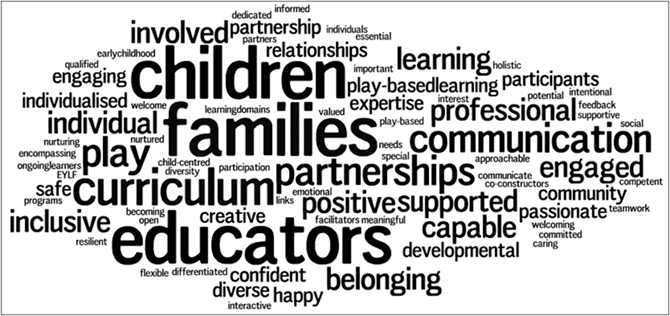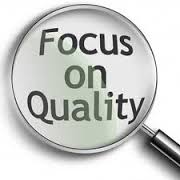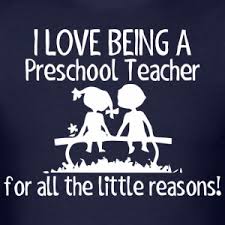Tips for Running a Successful Childcare Program
 Working with children and developing little minds may be one of the most rewarding things you’ll ever do. But managing your program may be another story!!
Working with children and developing little minds may be one of the most rewarding things you’ll ever do. But managing your program may be another story!!
Like many business managers, you likely got involved in this one because you are passionate about what you do and hoped to make that your life’s work. As the saying goes, do what you love and you’ll never work another day in your life!
Even as personally fulfilling as your program may be, it is still a business and like any other business, it needs to be nurtured. That’s not always the fun part about child care but we’ll offer some tips to make it easier so you can spend more time doing what you really enjoy!
While this is far from an exhaustive list of what it takes to run a business, it offers a few suggestions to get you started. Let’s break this down into 3 major functions of your business:
Administration
Making sure your program is operating smoothly, efficiently and profitably is critical to its ability to thrive and survive long-term. One of the keys to understanding and managing your business is to measure and track your Key Performance Indicators (KPIs).
KPIs are values that most significantly affect the success of your business. For example, your enrollment rate is probably a key performance indicator of the profitability of your business. Identifying these KPIs is a great first step toward continuous improvement.
 Think about the elements of your business that really drive your success. Be sure you are measuring those values, tracking them over time, and monitoring them to determine trends or anomalies. These KPIs can be an indicators of improvement opportunities and where you may be outperforming or underperforming your competitors. Understanding their impact and determining ways to improve will keep your program healthy and growing.
Think about the elements of your business that really drive your success. Be sure you are measuring those values, tracking them over time, and monitoring them to determine trends or anomalies. These KPIs can be an indicators of improvement opportunities and where you may be outperforming or underperforming your competitors. Understanding their impact and determining ways to improve will keep your program healthy and growing.
While analyzing numbers for your program may not be the most exciting thing you do, finding out that your cost per child is increasing, for example, can help you stave off potential issues down the road. A monthly review of your KPIs can identify problem areas or things you can do to improve the efficiency of your program.
Good program management software can also help you keep your program on track. Tools such as Sandbox Software can assist in record-keeping, communication, budgeting and many other tasks. While it may seem like a daunting task to consider automating your files, any short-term pain will often result in long-term gain!
Whatever steps you take, just be sure you have a process in place to review the key elements of your business on a regular basis. Operating blindly can easily result in issues that may have been prevented with a little foresight.
Teachers
When it comes to creating a great childcare program, teachers are certainly a big factor in that equation! Finding good teachers and providing the right training and support can make all the difference.
Is there a correlation between the level of teacher training and the care they provide? Studies suggest the answer is “yes!”
Language, cognition, social competence and other areas of basic early learning are developed through a child’s early experiences and interactions. These social and cultural contexts have a profound influence on a child’s development, so the quality and type of care they receive in early childhood is of utmost importance.
 What areas of teacher training are most useful? The aspects of training that affect development are certainly the most instrumental for a child’s social and academic success, but there other important standards of quality that teacher training can improve. A trained and knowledgeable childcare professional tends to be more engaged and equipped to create a better environment for young children.
What areas of teacher training are most useful? The aspects of training that affect development are certainly the most instrumental for a child’s social and academic success, but there other important standards of quality that teacher training can improve. A trained and knowledgeable childcare professional tends to be more engaged and equipped to create a better environment for young children.
One study found that coherent teacher preparation programs such as the CDA Credentials are more effective in preparing teachers than are ad hoc educational experiences. Watch this video from the CDA Council about teachers who have earned their CDA Credentials and their thoughts about the impact on their teaching style.
It bears noting that teacher education and training isn’t the only element affecting quality of childcare. Even untrained (or inadequately trained) childcare professionals can make a big difference toward providing the emotional/cognitive developmental support that a young child needs when they are enthusiastic and committed to their field.
However, teacher training and ongoing professional development can improve such a commitment, as well as providing more career opportunities that sustain this kind of commitment.
This is certainly not to say that a teacher’s level of education is the sole predictor of their ability to provide quality care to their children. It does, however, suggest that the key elements to providing the best care and development to our  children are to:
children are to:
- Hire enthusiastic and educated teachers
- Provide an environment that encourages and inspires them to care
- Ensure their knowledge and skills stay current through high-quality training in a variety of topics relevant to early childhood learning
Marketing
Great, you've created an awesome program but now you need to make sure everyone knows about it!
The first step in marketing your school is to decide what you want your marketing to accomplish. For example, are you looking to grow your program or just maintain current enrollment levels? Your approach will differ depending upon your business goals, your target audience, and your marketing budget.
The second step is to remember that marketing needs to be an on-going process. Even if you don't plan on growing the size of your school, you still need to consider how you will replace departing students. Determine the ideal number of students for your school and then consider normal attrition and how you will replace those students. Attrition is a gradual reduction in the number of students due to normal turnover (eg., moves, graduation, etc.).
The third step is to work to keep satisfied customers. Adding new students is much harder if you don't keep your existing students. Make sure your customers are satisfied with your service and facility. This in turn will likely generate good "word of mouth" advertising for your school and help you maintain a waiting list.
Some things to consider for your Marketing Plan:
- What do you want to accomplish: Grow your school? Maintain size? Reach a more culturally diverse population?
- How will you ensure that your marketing plan is sustainable? Does it need to be revised continuously, quarterly, etc.?
- What process do you have in place for evaluating and promoting the satisfaction of your present clients? How do you combine that with your KPIs to determine your areas of improvement?
- What type of marketing would be best for your community: digital marketing, local ads, direct contact, etc?
Going Forward
Certainly this is not the “be-all, end-all” formula for business success but if you take steps to focus on each of these elements, you will certainly increase your likelihood for success in your program! Here are some additional resources to help you manage and grow your program:
High-Quality Infant/Toddler Educators Need Good Training
Director’s Guide to Child Care Training and Staff Development
Key Strategies to Transform Program Quality
Keeping Families Involved in the Children’s Development
Good luck with your program and thank you for making a difference!
